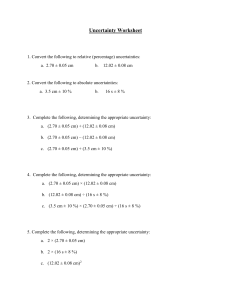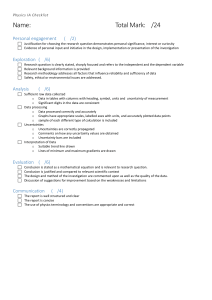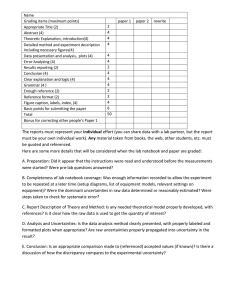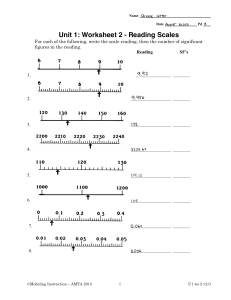Propagation Of Uncertainty In Chemistry Lab Reports
advertisement
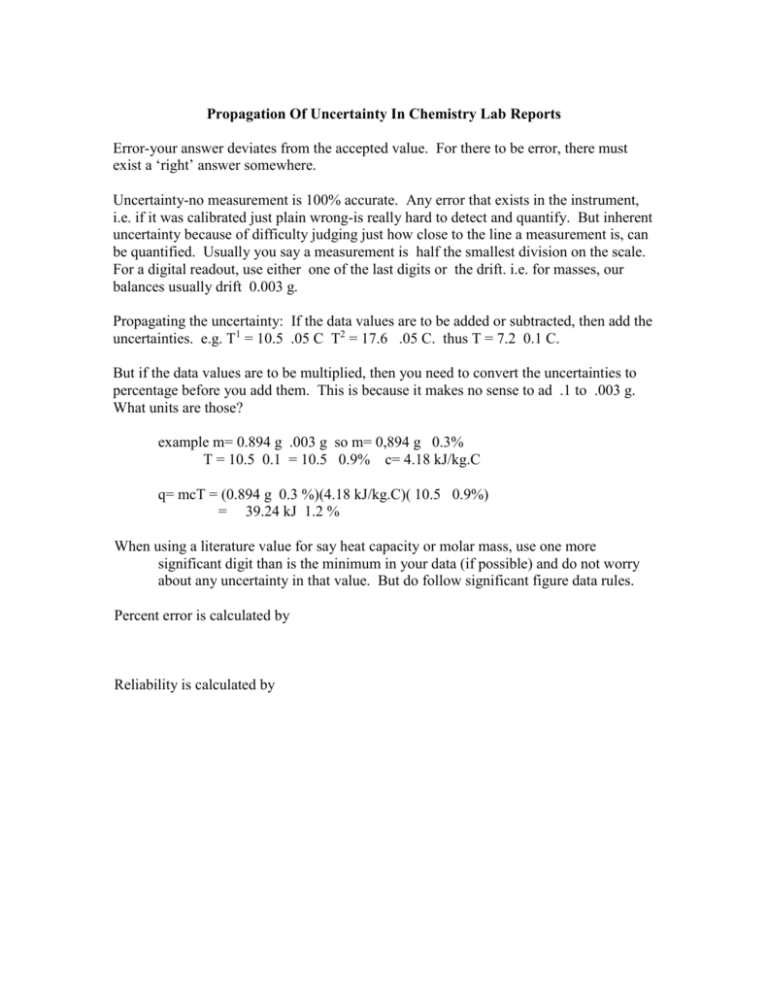
Propagation Of Uncertainty In Chemistry Lab Reports Error-your answer deviates from the accepted value. For there to be error, there must exist a ‘right’ answer somewhere. Uncertainty-no measurement is 100% accurate. Any error that exists in the instrument, i.e. if it was calibrated just plain wrong-is really hard to detect and quantify. But inherent uncertainty because of difficulty judging just how close to the line a measurement is, can be quantified. Usually you say a measurement is half the smallest division on the scale. For a digital readout, use either one of the last digits or the drift. i.e. for masses, our balances usually drift 0.003 g. Propagating the uncertainty: If the data values are to be added or subtracted, then add the uncertainties. e.g. T1 = 10.5 .05 C T2 = 17.6 .05 C. thus T = 7.2 0.1 C. But if the data values are to be multiplied, then you need to convert the uncertainties to percentage before you add them. This is because it makes no sense to ad .1 to .003 g. What units are those? example m= 0.894 g .003 g so m= 0,894 g 0.3% T = 10.5 0.1 = 10.5 0.9% c= 4.18 kJ/kg.C q= mcT = (0.894 g 0.3 %)(4.18 kJ/kg.C)( 10.5 0.9%) = 39.24 kJ 1.2 % When using a literature value for say heat capacity or molar mass, use one more significant digit than is the minimum in your data (if possible) and do not worry about any uncertainty in that value. But do follow significant figure data rules. Percent error is calculated by Reliability is calculated by
